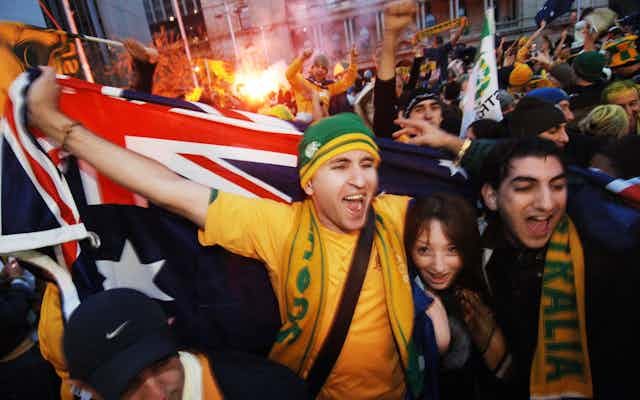Handling crowds on major events is a huge challenge for organisers, and the Olympics Organising Committee will be dealing with some of the biggest crowds there are. Simulating such crowds could be one of the best shortcuts to a safer Olympics.
The logistics of routing large crowds in a safe manner - both in normal and emergency situations - is one of the major tasks event security staff will face in London.
To plan ahead for these situations, planners often use crowd simulations. These can help to simulate “what-if” scenarios, and the consequences if these events occur.
There are many different approaches to modelling what crowds do. Some are “macroscopic”: these try to understand how groups of people move through an area. Modellers look at the quickest time it takes for a group of pedestrians to get from one place to another – and this constitutes the minimum evacuation time.
“Microscopic” approaches model every individual. They examine the interaction between people and find possible conflict points or bottlenecks.
Microscopic “force models” assume each individual is influenced by forces. A “driving” force sends them to their destination. “Repelling” forces push them away from obstacles and other pedestrians on the way to the destination.
Modellers combine these forces and map where pedestrians would walk on this field towards their destination.
Microscopic “agent-based models” (such as the one above) use artificial intelligence to model different behaviours for pedestrians. Each agent gets a set of parameters (such as age, gender, fatigue level, level of orientation skills) which are combined to predict individual preferences and behaviours.
Agent-based models are best for simulating everyday situations and observing the interaction of different characters. Force-based approaches model large and dense crowds accurately and work well for simulating evacuations at major events.
In Germany, we’ve been working on a force-based training simulator. The objective was to simulate peoples’ movements on the surroundings of a German soccer stadium for different scenarios.

The case study we used was the following scenario:
At 5.20pm on Saturday evening in the German city of Kaiserslautern, 40,000 rival soccer fans pour out of the Fritz-Walter stadium after the final whistle has been blown on a league game.
All of these fans are either heading to the parking lots or train stations. Even without any incidents, this is a difficult situation for the police and security services.
But in emergencies or disasters crowd management becomes a matter of life and death.
Our simulator (see the video below) runs in real-time for thousands of simulated pedestrians. The user imports a map of the environment he or she wants to simulate, defines locations for arrival and destinations for the pedestrians and presses the start button.
A window then displays an animation of the pedestrians navigating through the environment. Pedestrians are displayed in different colours depending on the density of the crowd – and this gives planners immediate feedback.
When simulation results reveal potential bottlenecks and conflict areas, planners can act. They might put security staff at intersections to guide pedestrians towards less-crowded areas. Or they might close specific sections that aren’t safe for large crowds.
None of this simulation will work, though, if the parameters used are inaccurate. Modellers need a lot of information before they start:
- What is the demography of people visiting the event?
- Are people familiar with the venue?
- What are the logistics of transporting people to and from the event?
- How many people are going to visit the event and what are the arrival times?
- What is the exact geometry of the venue?
The best place to get this information is from experienced security staff. Great staff combined with a good simulation will improve the planning process significantly.
Simulations are not meant to reflect reality, but they do provide an approximation of what may happen and reflect trends and patterns of crowds. These tools have to be used responsibly.
Precisely defined parameters and expertly interpreted results are the only way to get safer crowds.

